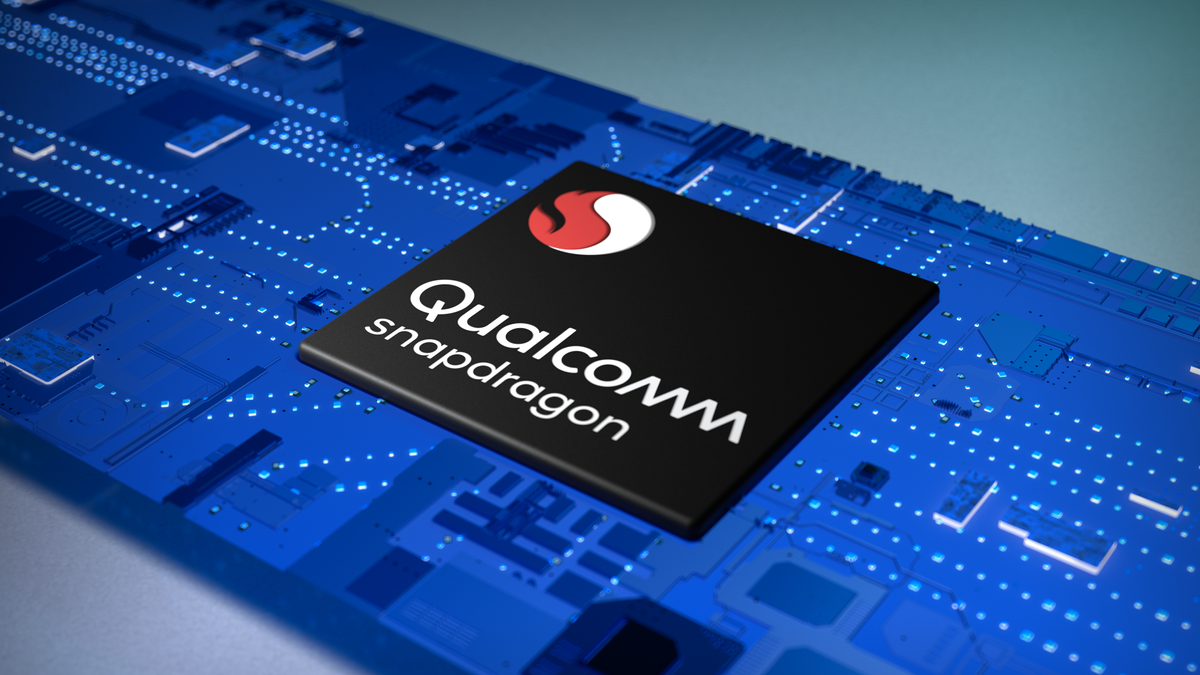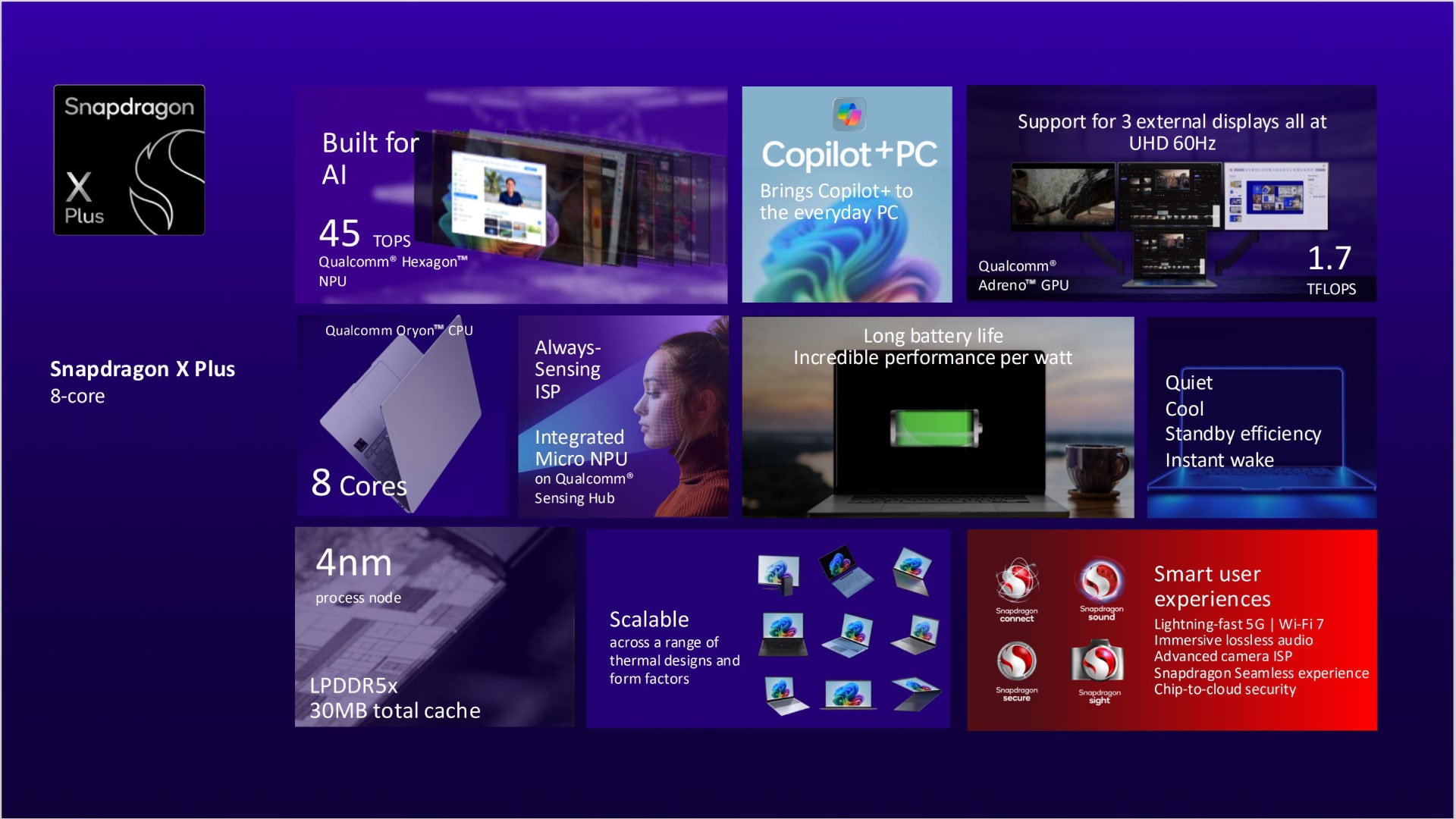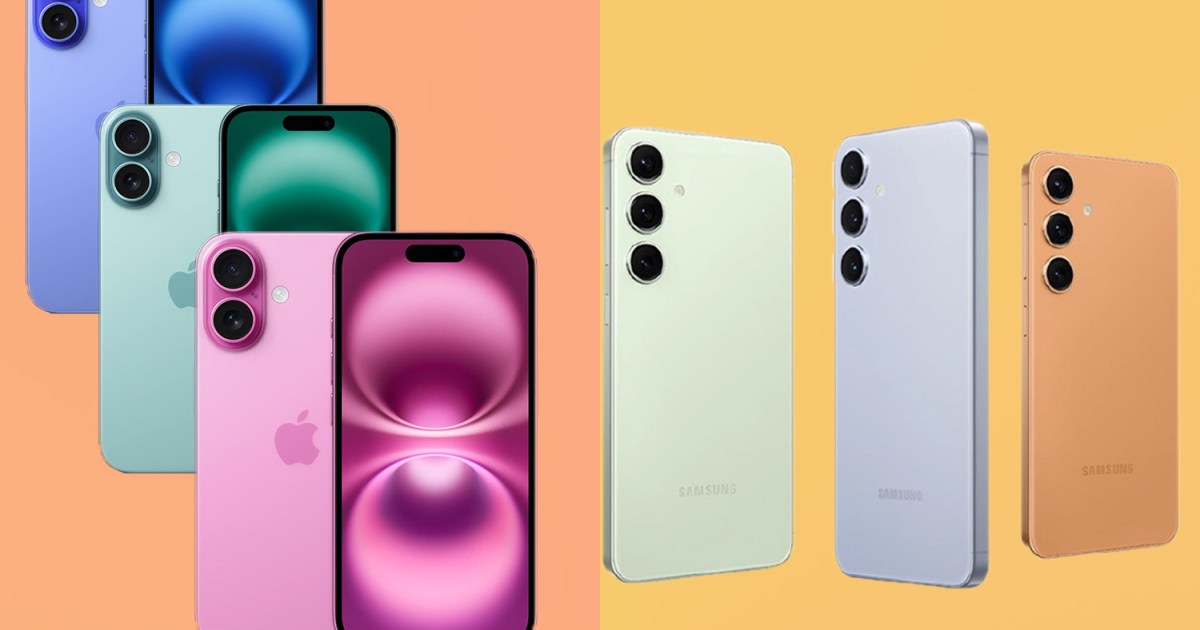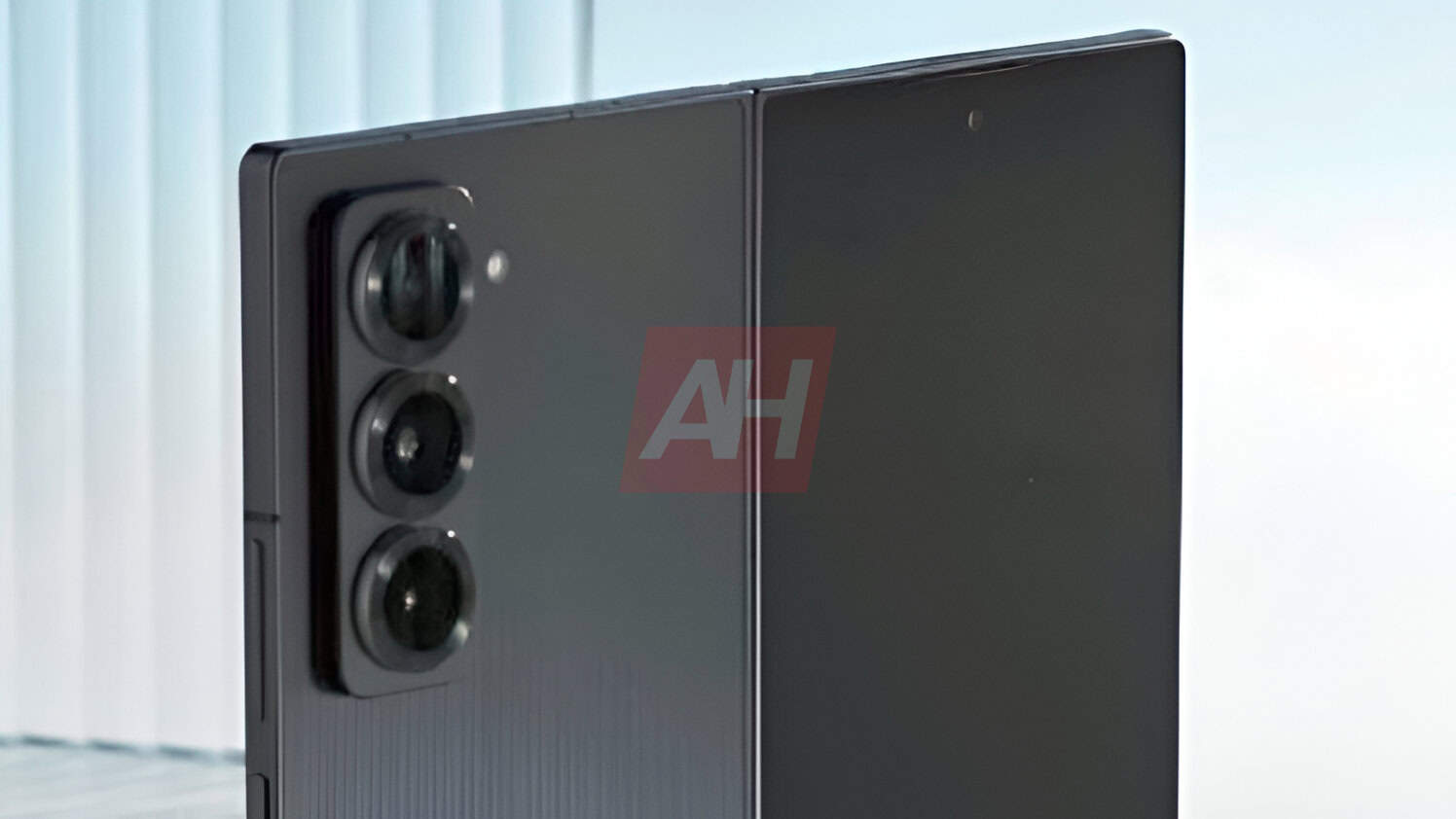Reddit is giving its staff a lot more power over the communities on its platform. Starting today, Reddit moderators will not be able to change if their subreddit is public or private without first submitting a request to a Reddit admin. The policy applies to adjusting all community types, meaning moderators will have to request to make a switch from safe for work to not safe for work, too.
Technology
Reddit is making sitewide protests basically impossible

By requiring admin approval for the changes, Reddit is taking away a lever many communities used to protest the company’s API pricing changes last year. By going private, the community becomes inaccessible to the public, making the platform less usable for the average visitor. And that’s part of the reason behind the change.
“The ability to instantly change Community Type settings has been used to break the platform and violate our rules,” Reddit VP of community Laura Nestler, who goes by the username Go_JasonWaterfalls on the platform, writes in a post on r/modnews. “We have a responsibility to protect Reddit and ensure its long-term health, and we cannot allow actions that deliberately cause harm.”
Last year, thousands of subreddits went private to protest changes to Reddit’s API pricing that forced some apps and communities to shut down. Going private was effective during the protests in making a statement and raising awareness. But it also blocked off content that Reddit users might have made with the expectation that it would stay public. (Going private made Google searches worse, too.)
During the protests, Reddit sent messages to moderators of protesting communities to tell them that it would remove them from their posts unless they reopened their subreddits. It also publicly noted that going NSFW (Not Safe For Work), a tool moderators used to add friction to accessing a subreddit and to make the subreddit ineligible for advertising, was “not acceptable.”
More than a year after the protests, Reddit is essentially back to normal. But it appears the company still feels it has to make changes to protect the platform.
“While we are making this change to ensure users’ expectations regarding a community’s access do not suddenly change, protest is allowed on Reddit,” writes Nestler. “We want to hear from you when you think Reddit is making decisions that are not in your communities’ best interests. But if a protest crosses the line into harming redditors and Reddit, we’ll step in.”
Reddit says it will review requests to make communities private or NSFW within 24 hours. For smaller or newer communities — under 5,000 members or less than 30 days old — requests will be approved automatically. And if a community wants to temporarily restrict posts or comments for up to seven days, which might be useful for a sudden influx of traffic or when mod teams want to take a break, they can do so without approval with the “temporary events” feature.
Reddit worked with mods ahead of announcing this change, Nestler tells me in an interview. The same day Nestler and I talked, for example, she said that she had spoken about the changes with Reddit’s mod council, which has about 160 moderators.
She characterized their reaction as “broadly measured” and said that the mods understand Reddit’s rules and why Reddit is making the change, “even if they don’t necessarily like it.” But “the feedback that was very obvious was this will be interpreted as a punitive change,” particularly in response to last year’s API protests, she says.
I asked if Reddit would reconsider this new requirement if there was significant blowback. “We’re going to move forward with it,” Nestler says. “We believe that it’s needed to keep communities accessible. That’s why we’re doing this.”
Nestler says the change is something that the company has talked about since she came to Reddit (she joined in March 2021, two years before the protests). But the protests made it clear that letting moderators make their communities private at their discretion “could be used to harm Reddit at scale” and that work on this feature was “accelerated” because of the protests.
Nestler wanted to make clear that its rules aren’t new and that the enforcement of the rules isn’t new. “Our responsibility is to protect Reddit and to ensure its long-term health,” Nestler says. “After that experience, we decided to deprecate a way to cause harm at scale.” However, she says that the company only did so “when we were confident that we could bring our mods along with us.”
Technology
New Snapdragon X-series chip in testing – code name: Project Glymur

The CPU market of late has been dominated by Intel and AMD; Qualcomm, with its AI-powered, energy-efficient Snapdragon X-series ARM processors, aim to challenge that.
Qualcomm’s current X-series processors have been making waves since their June 2024 launch. Winfuture have exclusively revealed that Qualcomm has been working on its next-gen high-end Snapdragon X2 CPU “SC8480XP”, under the codename “Project Glymur”.
These next-gen processors place Qualcomm in competition with Apple’s M-series processors: unlike the x86 chips Intel and AMD use, the Snapdragon X-series uses an ARM architecture – like Apple’s M-series – designed for mobility and efficiency, compared to the mainly performance-focused former.
A standout feature of the X-series is its full compatibility with Microsoft Copilot+. It supports Microsoft’s Auto SR (super resolution), which uses AI to enhance video quality and frame rate in existing games. By including these features from the start, Snapdragon X positions itself well for the future; other chip manufacturers will have to introduce these features through later updates.

Qualcomm’s Snapdragon X-series launched to mixed reviews. Customers hailed the new ARM processors for their power-efficiency and AI features; however, the CPUs fell short in performance when compared to AMD’s Ryzen and Intel’s Core X86 chips, especially where multi-core tasks were concerned. Another issue Qualcomm face is software compatibility: not all software has been ported to ARM.
Qualcomm has been testing the SC8480XP since July 2024, and there is still little information about what features it has to offer; according to Winfuture we will likely know little more until 2025.
In the meantime, there is still more to come for Qualcomm’s current generation of processors. In the “international export databases” where Project Glymur was discovered, the X1P-24-100, a new eight-core ARM processor, was also found.
Servers computers
Dell 42U Server & Networking Rack
Technology
Useful quantum computers are edging closer with recent milestones


An exhibition model of IBM’s Q System One quantum computer
Misha Friedman/Getty Images
Despite all the hype around quantum computers, they are still far too error-prone to be of real use. But recent experiments show that this may not always be the case, boosting the credibility of claims from companies like Google and IBM that we might get useful quantum computers as soon as 2029. These latest experiments represent key milestones and signal that we are entering a new age, say researchers.
“Suddenly, really useful devices seem tantalisingly close, in a way that they never have done before,” says Jamie…
Servers computers
The Lenovo ThinkSystem SR670 V2 is a GPU-rich 3U rack server that supports eight double-wide GPUs.
Technology
Apple iPhone 16 vs. Samsung Galaxy S24: Which is best?

Apple recently released the iPhone 16, almost nine months after Samsung unveiled the Galaxy S24 series. Although these phones are similar in many ways and are the cheapest in their flagship ranges, they run on different operating systems. How do these two phones compare in other aspects? Is one better than the other? Which one is the superior choice based on your preferences?
Let’s compare the two phones and find out which one suits you better.
Apple iPhone 16 vs. Samsung Galaxy S24: specs
| Apple iPhone 16 | Samsung Galaxy S24 | |
| Dimensions and weight | 5.81 x 2.82 x 0.31 inches
6.0 ounces |
5.79 x 2.78 x 0.30 inches
5.93 ounces |
| Display | 6.1-inch Super Retina XDR display
1179 x 2556 resolution (460 PPI) 60Hz refresh rate 2,000 nits peak brightness 1 nit minimum brightness |
6.2-inch FHD+
1080 x 2340 resolution (416 PPI) 120Hz refresh rate 2,600 nits peak brightness 1 nit minimum brightness |
| Processor | A18 chip
Six-core CPU Five-core GPU 16-core Neural Engine |
Qualcomm Snapdragon 8 Gen 3 for Galaxy
Eight-core CPU Number of GPUs not announced by Qualcomm Hexagon Processor |
| Rear cameras | Dual camera system
48-megapixel Fusion main 12MP ultrawide |
Triple camera system
50MP main 12MP ultrawide 10MP telephoto |
| Front cameras | 12MP selfie | 12MP selfie |
| Storage and memory | 8GB/128GB
8GB/256GB 8GB/512GB |
8GB/128GB
8GB/256GB |
| AI | Apple Intelligence (coming soon) | Galaxy AI |
| Durability | IP68 | IP68 |
| Software and support | iOS 18
Six to eight years of software updates |
Android 15
Seven years of software updates |
| Battery and charging | Up to 22 hours between charges
Unknown battery size 45W wired 30W wireless 4.5W reverse wireless |
Up to 24 hours between charges
4,000mAh 25W wired 15W wireless 4.5W reverse wireless |
| Colors | Ultramarine
Teal Pink White Black
|
Cobalt VioletAmber Yellow
Marble Gray Onyx Black Jade Green (Samsung exclusive) Sapphire Blue (Samsung exclusive) Sandstone Orange (Samsung exclusive) |
| Price | Starting at $800 | Starting at $800 |
| Review | 4 out of 5 stars | 4 out of 5 stars |
Apple iPhone 16 vs. Samsung Galaxy S24: design and display

At first glance, at least on the front, there isn’t much difference between the Samsung Galaxy S24 and the Apple iPhone 16. Both have rounded edges and similar aluminum bodies. The Galaxy S24’s display is a tad larger at 6.2 inches compared to the iPhone 16’s 6.1 inches, and you’ll notice two new buttons on the Apple phone (more on that below).
When turned on, the displays reveal more distinctions. Samsung’s phone offers a higher refresh rate and peak brightness, while the Apple device provides a sharper resolution. Both phones have the same minimum brightness, just 1 nit, which is fantastic in lowlight conditions.
The Galaxy S24 is protected by Gorilla Glass Victus 2 on both the front and back, while the iPhone 16 features a Ceramic Shield front and a color-infused glass back. Both phones offer IP68 protection, making them dustproof and water-resistant up to 6 meters for 30 minutes.
The most important point that stands out regarding the displays is the refresh rate for each handset. In 2024, it’s embarrassing that the iPhone 16 (and iPhone 16 Plus), like previous models, is stuck at 60Hz, versus the 120Hz on the iPhone 16 Pro and Galaxy S24 series. A higher refresh rate provides a smartphone experience that is more visually pleasing, responsive, and comfortable, which is most noticeable during gaming. (The iPhone 17 is expected to offer a 120Hz refresh rate — finally.)
The Galaxy S24 features three familiar buttons: a side key and two for volume. The side key turns the screen on and off or locks the device, while the volume buttons allow you to control media, calls, and notifications.
The iPhone 16 also includes a side button for on or off functionality and volume up and down buttons. New to this model is a Camera Control button, which offers enhanced control of the phone’s Camera app during photo or video capture. This includes access to features such as zoom, focus, and exposure. The iPhone 16 also now has the Action button, a versatile and customizable feature first seen in the iPhone 15 Pro series. This button can be programmed to execute various simple and complex actions, enhancing the phone’s functionality and personalizing it to suit individual preferences.
Design is always a tough category to call, because so much of it is personal. The Camera Control button is a game-changer, but the 60Hz refresh rate really does hold the iPhone back. We’re giving this to the iPhone, largely because 60Hz on an iPhone doesn’t generally feel slow, and because the Camera Control button is very good.
Winner: Apple iPhone 16
Apple iPhone 16 vs. Samsung Galaxy S24: performance and software

The Galaxy S24 is powered by the Qualcomm Snapdragon 8 Gen 3 for Galaxy, a customized version of the Snapdragon 8 Gen 3 specifically designed for Samsung devices to deliver improved performance and efficiency. Our tests showed that the Galaxy S24 is fast and capable of handling everyday tasks without lag or stuttering. However, when taking many photos quickly, the phone became warm, although it never got too hot to hold.
The iPhone 16 is equipped with the all-new A18 chip, which Apple claims offers an improved CPU speed of up to 30% and 40% faster GPU performance compared to the A16 chip found in the iPhone 15. Despite these significant improvements, we did not notice substantial performance enhancements during our tests, possibly because the regular iPhones were already very fast.
However, the iPhone 16 includes an A18 chip, which will support Apple Intelligence (see below) when it’s released; the iPhone 15 did not.
The iPhone 16 runs iOS 18, and the Galaxy S24 includes Android 14. Your preference will likely come down to personal experience at this stage. But if you don’t have a choice, don’t worry. While they still have their differences, iOS and Android are generally quite similar these days, and it won’t take you long to find your footing when switching from one to the other. Apple usually offers iPhone users six to eight years of iOS updates, while Samsung has confirmed that Galaxy S24 users will receive seven years of Android updates.
It’s a tough category to call. The newer Apple phone has the edge in pure power, but whether that means a smoother experience is difficult to gauge because there are too many variables to consider.
Winner: Apple iPhone 16
Apple iPhone 16 vs. Samsung Galaxy S24: cameras

We’ve tested the camera systems on both phones. Overall, they offer mixed results.
First, it’s important to note that the Galaxy S24 has a triple rear camera system, while the iPhone 16 offers a dual camera system. The former offers a 50-megapixel main, 12MP ultrawide, and 10MP telephoto, while the latter provides a 48MP Fusion main and 12MP ultrawide. On the front, both have a 12MP selfie camera.
Our Galaxy S24 camera system test mainly yielded positive results. In the past, Samsung devices have been known for producing oversaturated colors in photos. However, thanks to improved algorithms governing color representation, the images now tend to be more accurate to life. Overall, images were much better when there was no movement when taking a shot. Otherwise, it can mean a blurry picture. Close-up shots with the Galaxy S24 were good, and the selfie camera was “just” decent.
The iPhone 16 features a 48-megapixel primary camera with 2x optical zoom, a 12MP ultrawide camera, and a 12MP selfie camera, similar to the iPhone 15. However, there are some significant changes.
The new iPhone introduces autofocus for the ultrawide camera, allowing macro photography and enabling the capture of spatial photos for viewing on an Apple Vision Pro. Additionally, the primary camera now has an anti-reflective lens coating and can capture pictures with zero shutter lag, a feature previously exclusive to Pro iPhones.
In our tests, the primary camera captured detailed photos with pleasing colors. The ultrawide camera performed well, though not exceptionally, and taking macro photos was enjoyable. The selfie camera on the iPhone remained as reliable as ever.
The standout feature across the entire iPhone 16 lineup is the physical Camera Control button on the phone’s right side, just below the power button. Pressing this button activates the Camera app, and a single press takes a photo while pressing and holding it records a video.
Additionally, the Camera Control has a capacitive sensor on its top. A light double press on the Camera Control, while the camera is open, activates a new UI for selecting various camera controls such as exposure, zoom, and styles. You can slide your finger across the Camera Control to cycle between them, lightly press the button to select one, and then slide your finger again to adjust the chosen control.
While this may present a learning curve, it’s a fun, new experience that shouldn’t take long to figure out. Furthermore, Apple Intelligence is adding more features.
Winner: iPhone 16
Apple iPhone 16 vs. Samsung Galaxy S24: battery and charging

The Samsung Galaxy S24 has a 4,000mAh battery intended to last a full day with regular use; however, we could use more than a day on a single charge. On a down note, the basic Galaxy S24 model only supports charging speeds of up to 25 watts, unlike its larger counterparts, the Galaxy S24 Plus and Galaxy S24 Ultra, which support 45W charging.
On the wireless front, the Samsung phone does not support the new Qi2 wireless charging standard. Wireless charging is still possible but is limited to 15W, which may be slow. The phone also features reverse wireless charging, with a speed of up to 4.5W.
The iPhone 16 has a 4,685 mAh battery, allowing you to use the phone throughout the day without recharging. The standard iPhone 16 series now supports MagSafe charging up to 25W, an improvement from the previous 15W. In addition to MagSafe, the iPhone 16 also supports Qi2 and Qi wireless charging and 4.5W reverse wireless charging, similar to the previous model.
In our tests using an Anker 747, the iPhone 16 charged from 5% to 60% in approximately 30 minutes, and it took 90 minutes to reach 100%. While charging from a low or dead battery to around 70% is quick, the final 30% takes longer.
The Samsung Galaxy S24 and the iPhone 16 have strong batteries, but neither is exceptional, which is expected as they are the more affordable flagship models from their respective companies. Therefore, we consider this a tie.
Winner: iPhone 16
Apple iPhone 16 vs. Samsung Galaxy S24: AI

When history is written, this year’s smartphones will be remembered for being among the first to embrace artificial intelligence. The Galaxy S24 includes Galaxy AI, while the iPhone will eventually include Apple Intelligence. When discussing either of these products, it’s important to note they are both works in progress, especially in the case of Apple Intelligence, which has not yet been released.
Galaxy AI brings a range of advanced AI capabilities directly to Galaxy smartphones and tablets. It aims to provide intelligent and personalized experiences while enhancing the functionality of various features. These include an enhanced user experience, improved functionality, privacy and security, and offline accessibility.
Apple Intelligence, which the company revealed at the Worldwide Developers Conference (WWDC) in June, will eventually be found on every Apple product. It’s a suite of AI features designed to enhance productivity, creativity, and the overall user experience. It combines on-device and server-side processing to deliver powerful AI capabilities while prioritizing user privacy.
Apple Intelligence features will initially be divided into three broad categories: photo and video editing, writing, and contextural suggestions or automation.
The iPhone 16 series comes with iOS 18, which does not include Apple Intelligence. You will have to wait for iOS 18.1 and iOS 18.2 to be released later this year to access it. However, not all Apple Intelligence components will be available on the iPhone 16 series even after these updates arrive, as full releases might extend into 2025.
As an iPhone 16 buyer, you are promised to be among the first to experience the new tools, but since the biggest new features aren’t ready yet, this has to go to the Samsung phone.
Winner: Samsung Galaxy S24
Apple iPhone 16 vs. Samsung Galaxy S24: price and availability
The starting price for each phone is $799, which includes 128GB of storage. For $859, you can get the Galaxy S24 with 256GB. The 256GB iPhone 16 model from Apple is priced at $899. Unlike Samsung, Apple offers a 512GB storage option for $1.099.
Availability is strong for both of these phones, as they’re some of the most popular phones on the planet. Walk into anyplace that sells phones and you’re going to be able to find these.
Apple iPhone 16 vs. Samsung Galaxy S24: verdict

When deciding between the Galaxy S24 and iPhone 16, your choice may depend on whether you prefer Android or iOS. If you don’t have a strong preference for either operating system, the iPhone 16 is the better option. Historically, new iPhones released in the fall tend to outperform Galaxy S models released earlier in the year, and this pattern continues with the latest models.
While the Galaxy S24 might be available at slightly lower prices due to being slightly older, the iPhone 16 offers some advantages, such as access to 512GB of storage. Despite the price difference, the iPhone 16 stands out with its design, performance, camera, software, and additional hardware features like the Action button and Camera Control. Overall, the iPhone 16 is the preferred choice over the entry-level Galaxy S24.
Technology
Galaxy Z Fold Special Edition leak reveals launch & preorder dates

There has been a lot of talk about the Galaxy Z Fold Special Edition in recent weeks. While it will use the Galaxy Z Fold 6 as a base, there will be some notable differences. The device is expected to bet on thinness to compete against recent foldable smartphones. A new leak has revealed the alleged release date and preorder period of the Samsung Galaxy Z Fold Special Edition.
The Galaxy Z Fold Special Edition, initially known as the Galaxy Z Fold 6 Ultra, was leaked months ago. According to reports, the project went through multiple decision changes along the way, including a potential cancellation. Samsung’s initial idea was to compete against the thinness of foldables like the Honor Magic V3, leaks claim. After failing to achieve this, the company would have decided to cancel the smartphone, but would later resume the project.
Galaxy Z Fold Special Edition would launch on October 18; preorder stage period leaked
Now, unexpectedly, the Galaxy Z Fold Special Edition appeared on the Samsung India website. This is intriguing, as leaks about the phone indicated that it would be coming to limited markets, such as South Korea and China. Markets like India were not on the cards, but that may have changed. The fact that Samsung India’s website promotes the device’s arrival opens the door for other countries that were not in the cards to also receive it.
Plus, the Galaxy Z Fold Special Edition reportedly appeared on the website of T Store, a Korean retailer, showing a launch on October 18 and preorders open until October 24. The company would begin shipping on October 25. Interestingly, the poster incorporates a “6” in the name, despite leaks suggesting it will only be known as “Galaxy Z Fold Special Edition.” You can take it with a pinch of salt, though.

Some expected specs according to leaks
The leaks say that the Galaxy Z Fold Special Edition will feature larger displays. The internal folding screen would grow to 8 inches, while the external screen would reach 6.5 inches. The company would reduce the thickness of the device noticeably to 10.6 when folded (12.1 mm in the Galaxy Z Fold 6) and 4.9 mm when unfolded (5.6 mm in the Galaxy Z Fold 6).
Although Samsung has made an effort to reduce the thickness of the phone, it is still behind other big brands. The latest Google Pixel 9 Fold Pro is slightly thinner (10.5 mm when folded, 5.1 mm when unfolded). The South Korean company can’t compete with the Honor Magic V3, which boasts a thickness of 9.3 mm when unfolded. Anyway, Samsung would debut a technology to enable S-Pen support without a digitizer on the Galaxy Z Fold Special Edition.
-

 Womens Workouts1 week ago
Womens Workouts1 week ago3 Day Full Body Women’s Dumbbell Only Workout
-

 Technology2 weeks ago
Technology2 weeks agoWould-be reality TV contestants ‘not looking real’
-

 Science & Environment2 weeks ago
Science & Environment2 weeks ago‘Running of the bulls’ festival crowds move like charged particles
-

 News1 week ago
News1 week agoOur millionaire neighbour blocks us from using public footpath & screams at us in street.. it’s like living in a WARZONE – WordupNews
-

 Science & Environment2 weeks ago
Science & Environment2 weeks agoHow to wrap your mind around the real multiverse
-

 Science & Environment2 weeks ago
Science & Environment2 weeks agoHyperelastic gel is one of the stretchiest materials known to science
-

 Science & Environment2 weeks ago
Science & Environment2 weeks agoMaxwell’s demon charges quantum batteries inside of a quantum computer
-

 Science & Environment2 weeks ago
Science & Environment2 weeks agoSunlight-trapping device can generate temperatures over 1000°C
-

 Science & Environment2 weeks ago
Science & Environment2 weeks agoHow to unsnarl a tangle of threads, according to physics
-

 Science & Environment2 weeks ago
Science & Environment2 weeks agoLiquid crystals could improve quantum communication devices
-

 Science & Environment2 weeks ago
Science & Environment2 weeks agoPhysicists are grappling with their own reproducibility crisis
-

 Science & Environment2 weeks ago
Science & Environment2 weeks agoITER: Is the world’s biggest fusion experiment dead after new delay to 2035?
-

 News2 weeks ago
News2 weeks agoYou’re a Hypocrite, And So Am I
-

 Sport2 weeks ago
Sport2 weeks agoJoshua vs Dubois: Chris Eubank Jr says ‘AJ’ could beat Tyson Fury and any other heavyweight in the world
-

 Science & Environment2 weeks ago
Science & Environment2 weeks agoQuantum ‘supersolid’ matter stirred using magnets
-

 Science & Environment2 weeks ago
Science & Environment2 weeks agoWhy this is a golden age for life to thrive across the universe
-

 Science & Environment2 weeks ago
Science & Environment2 weeks agoQuantum forces used to automatically assemble tiny device
-

 Science & Environment2 weeks ago
Science & Environment2 weeks agoCaroline Ellison aims to duck prison sentence for role in FTX collapse
-

 Science & Environment2 weeks ago
Science & Environment2 weeks agoNuclear fusion experiment overcomes two key operating hurdles
-

 Science & Environment2 weeks ago
Science & Environment2 weeks agoLaser helps turn an electron into a coil of mass and charge
-

 Science & Environment2 weeks ago
Science & Environment2 weeks agoTime travel sci-fi novel is a rip-roaringly good thought experiment
-

 Science & Environment2 weeks ago
Science & Environment2 weeks agoNerve fibres in the brain could generate quantum entanglement
-

 CryptoCurrency2 weeks ago
CryptoCurrency2 weeks agoCardano founder to meet Argentina president Javier Milei
-

 Science & Environment1 week ago
Science & Environment1 week agoMeet the world's first female male model | 7.30
-

 News2 weeks ago
News2 weeks agoIsrael strikes Lebanese targets as Hizbollah chief warns of ‘red lines’ crossed
-

 Womens Workouts1 week ago
Womens Workouts1 week agoBest Exercises if You Want to Build a Great Physique
-

 CryptoCurrency2 weeks ago
CryptoCurrency2 weeks agoEthereum is a 'contrarian bet' into 2025, says Bitwise exec
-

 Science & Environment2 weeks ago
Science & Environment2 weeks agoWhy we need to invoke philosophy to judge bizarre concepts in science
-

 CryptoCurrency2 weeks ago
CryptoCurrency2 weeks agoDZ Bank partners with Boerse Stuttgart for crypto trading
-

 Womens Workouts1 week ago
Womens Workouts1 week agoEverything a Beginner Needs to Know About Squatting
-

 Womens Workouts1 week ago
Womens Workouts1 week ago3 Day Full Body Toning Workout for Women
-

 News2 weeks ago
News2 weeks agoBrian Tyree Henry on voicing young Megatron, his love for villain roles
-

 News2 weeks ago
News2 weeks ago▶️ Media Bias: How They Spin Attack on Hezbollah and Ignore the Reality
-

 Science & Environment2 weeks ago
Science & Environment2 weeks agoA slight curve helps rocks make the biggest splash
-

 Science & Environment2 weeks ago
Science & Environment2 weeks agoQuantum time travel: The experiment to ‘send a particle into the past’
-

 CryptoCurrency2 weeks ago
CryptoCurrency2 weeks agoBitcoin miners steamrolled after electricity thefts, exchange ‘closure’ scam: Asia Express
-

 CryptoCurrency2 weeks ago
CryptoCurrency2 weeks agoDorsey’s ‘marketplace of algorithms’ could fix social media… so why hasn’t it?
-

 CryptoCurrency2 weeks ago
CryptoCurrency2 weeks agoRedStone integrates first oracle price feeds on TON blockchain
-

 CryptoCurrency2 weeks ago
CryptoCurrency2 weeks agoBitcoin bulls target $64K BTC price hurdle as US stocks eye new record
-

 CryptoCurrency2 weeks ago
CryptoCurrency2 weeks agoBlockdaemon mulls 2026 IPO: Report
-

 CryptoCurrency2 weeks ago
CryptoCurrency2 weeks agoCoinbase’s cbBTC surges to third-largest wrapped BTC token in just one week
-

 News1 week ago
News1 week agoFour dead & 18 injured in horror mass shooting with victims ‘caught in crossfire’ as cops hunt multiple gunmen
-

 Travel6 days ago
Travel6 days agoDelta signs codeshare agreement with SAS
-

 Politics5 days ago
Politics5 days agoHope, finally? Keir Starmer’s first conference in power – podcast | News
-

 Sport2 weeks ago
Sport2 weeks agoUFC Edmonton fight card revealed, including Brandon Moreno vs. Amir Albazi headliner
-

 Science & Environment2 weeks ago
Science & Environment2 weeks agoA new kind of experiment at the Large Hadron Collider could unravel quantum reality
-

 Technology2 weeks ago
Technology2 weeks agoiPhone 15 Pro Max Camera Review: Depth and Reach
-

 Science & Environment2 weeks ago
Science & Environment2 weeks agoHow one theory ties together everything we know about the universe
-

 Science & Environment2 weeks ago
Science & Environment2 weeks agoBeing in two places at once could make a quantum battery charge faster
-

 CryptoCurrency2 weeks ago
CryptoCurrency2 weeks agoCrypto scammers orchestrate massive hack on X but barely made $8K
-

 Science & Environment2 weeks ago
Science & Environment2 weeks agoTiny magnet could help measure gravity on the quantum scale
-

 Science & Environment2 weeks ago
Science & Environment2 weeks agoFuture of fusion: How the UK’s JET reactor paved the way for ITER
-

 Science & Environment2 weeks ago
Science & Environment2 weeks agoHow do you recycle a nuclear fusion reactor? We’re about to find out
-

 CryptoCurrency2 weeks ago
CryptoCurrency2 weeks agoLow users, sex predators kill Korean metaverses, 3AC sues Terra: Asia Express
-

 CryptoCurrency2 weeks ago
CryptoCurrency2 weeks agoSEC asks court for four months to produce documents for Coinbase
-

 CryptoCurrency2 weeks ago
CryptoCurrency2 weeks ago‘No matter how bad it gets, there’s a lot going on with NFTs’: 24 Hours of Art, NFT Creator
-
Business2 weeks ago
How Labour donor’s largesse tarnished government’s squeaky clean image
-

 News2 weeks ago
News2 weeks agoBrian Tyree Henry on voicing young Megatron, his love for villain roles
-

 Womens Workouts1 week ago
Womens Workouts1 week agoHow Heat Affects Your Body During Exercise
-

 Womens Workouts1 week ago
Womens Workouts1 week agoKeep Your Goals on Track This Season
-

 News2 weeks ago
News2 weeks agoChurch same-sex split affecting bishop appointments
-

 Technology2 weeks ago
Technology2 weeks agoFivetran targets data security by adding Hybrid Deployment
-

 CryptoCurrency2 weeks ago
CryptoCurrency2 weeks ago$12.1M fraud suspect with ‘new face’ arrested, crypto scam boiler rooms busted: Asia Express
-

 Science & Environment2 weeks ago
Science & Environment2 weeks agoUK spurns European invitation to join ITER nuclear fusion project
-

 CryptoCurrency2 weeks ago
CryptoCurrency2 weeks agoDecentraland X account hacked, phishing scam targets MANA airdrop
-

 CryptoCurrency2 weeks ago
CryptoCurrency2 weeks agoCertiK Ventures discloses $45M investment plan to boost Web3
-

 CryptoCurrency2 weeks ago
CryptoCurrency2 weeks agoBeat crypto airdrop bots, Illuvium’s new features coming, PGA Tour Rise: Web3 Gamer
-

 CryptoCurrency2 weeks ago
CryptoCurrency2 weeks agoTelegram bot Banana Gun’s users drained of over $1.9M
-

 CryptoCurrency2 weeks ago
CryptoCurrency2 weeks ago‘Silly’ to shade Ethereum, the ‘Microsoft of blockchains’ — Bitwise exec
-

 CryptoCurrency2 weeks ago
CryptoCurrency2 weeks agoEthereum falls to new 42-month low vs. Bitcoin — Bottom or more pain ahead?
-
Business2 weeks ago
Thames Water seeks extension on debt terms to avoid renationalisation
-
Politics2 weeks ago
‘Appalling’ rows over Sue Gray must stop, senior ministers say | Sue Gray
-

 Science & Environment1 week ago
Science & Environment1 week agoCNN TÜRK – 🔴 Canlı Yayın ᴴᴰ – Canlı TV izle
-

 News1 week ago
News1 week agoWhy Is Everyone Excited About These Smart Insoles?
-

 Politics2 weeks ago
Politics2 weeks agoTrump says he will meet with Indian Prime Minister Narendra Modi next week
-

 Science & Environment2 weeks ago
Science & Environment2 weeks agoSingle atoms captured morphing into quantum waves in startling image
-

 Technology2 weeks ago
Technology2 weeks agoCan technology fix the ‘broken’ concert ticketing system?
-

 Science & Environment2 weeks ago
Science & Environment2 weeks agoHow Peter Higgs revealed the forces that hold the universe together
-

 Health & fitness2 weeks ago
Health & fitness2 weeks agoThe secret to a six pack – and how to keep your washboard abs in 2022
-

 CryptoCurrency2 weeks ago
CryptoCurrency2 weeks ago2 auditors miss $27M Penpie flaw, Pythia’s ‘claim rewards’ bug: Crypto-Sec
-

 CryptoCurrency2 weeks ago
CryptoCurrency2 weeks agoJourneys: Robby Yung on Animoca’s Web3 investments, TON and the Mocaverse
-

 CryptoCurrency2 weeks ago
CryptoCurrency2 weeks agoLouisiana takes first crypto payment over Bitcoin Lightning
-

 CryptoCurrency2 weeks ago
CryptoCurrency2 weeks ago‘Everything feels like it’s going to shit’: Peter McCormack reveals new podcast
-

 Science & Environment2 weeks ago
Science & Environment2 weeks agoA tale of two mysteries: ghostly neutrinos and the proton decay puzzle
-

 CryptoCurrency2 weeks ago
CryptoCurrency2 weeks agoSEC sues ‘fake’ crypto exchanges in first action on pig butchering scams
-

 CryptoCurrency2 weeks ago
CryptoCurrency2 weeks agoBitcoin price hits $62.6K as Fed 'crisis' move sparks US stocks warning
-

 CryptoCurrency2 weeks ago
CryptoCurrency2 weeks agoVonMises bought 60 CryptoPunks in a month before the price spiked: NFT Collector
-

 CryptoCurrency2 weeks ago
CryptoCurrency2 weeks agoVitalik tells Ethereum L2s ‘Stage 1 or GTFO’ — Who makes the cut?
-

 News2 weeks ago
News2 weeks agoBrian Tyree Henry on his love for playing villains ahead of “Transformers One” release
-

 News1 week ago
News1 week agoBangladesh Holds the World Accountable to Secure Climate Justice
-

 Womens Workouts1 week ago
Womens Workouts1 week agoWhich Squat Load Position is Right For You?
-

 TV1 week ago
TV1 week agoCNN TÜRK – 🔴 Canlı Yayın ᴴᴰ – Canlı TV izle
-

 Technology7 days ago
Technology7 days agoRobo-tuna reveals how foldable fins help the speedy fish manoeuvre
-

 Technology2 weeks ago
Technology2 weeks agoIs carbon capture an efficient way to tackle CO2?
-

 Science & Environment2 weeks ago
Science & Environment2 weeks agoThe physicist searching for quantum gravity in gravitational rainbows
-

 Fashion Models2 weeks ago
Fashion Models2 weeks agoMixte
-

 Politics2 weeks ago
Politics2 weeks agoLabour MP urges UK government to nationalise Grangemouth refinery
-

 Health & fitness2 weeks ago
Health & fitness2 weeks agoThe maps that could hold the secret to curing cancer
-

 CryptoCurrency2 weeks ago
CryptoCurrency2 weeks agoHelp! My parents are addicted to Pi Network crypto tapper
-

 CryptoCurrency2 weeks ago
CryptoCurrency2 weeks agoCZ and Binance face new lawsuit, RFK Jr suspends campaign, and more: Hodler’s Digest Aug. 18 – 24



You must be logged in to post a comment Login